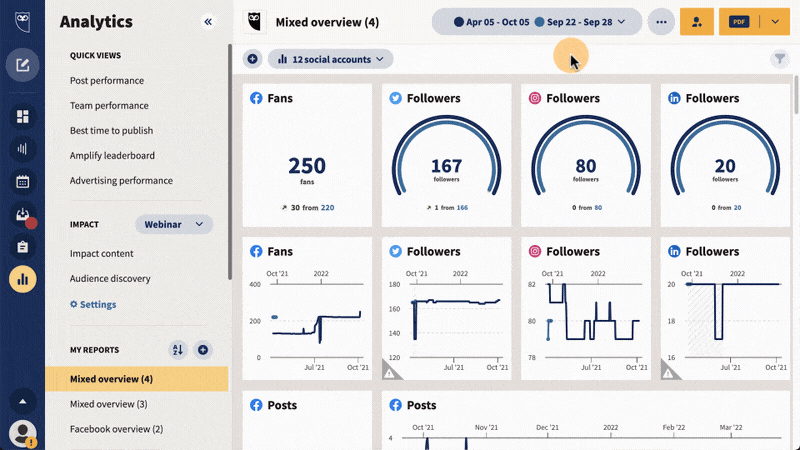MEDIA
SEO and SEM
Search Engine Optimization (SEO) is a crucial aspect of digital marketing that helps websites rank higher in search engine results pages. SEO is an organic process that involves a combination of technical and creative methods to improve the visibility and ranking of a website in the eyes of search engines. The process of SEO involves optimizing various elements of a website, including its content, structure, and code, to increase its relevance and authority for specific keywords and phrases.
The ultimate goal of SEO is to increase organic traffic to a website by ranking higher in search results. Organic traffic is the traffic that a website receives from search engines without paying for it. By ranking higher in search results, a website is more likely to be seen by potential customers and drive more traffic to the site. This can result in increased sales, leads, and brand awareness for a business.

Search Engine Marketing (SEM) is a paid form of online advertising that involves placing ads in search engine results pages. Unlike SEO, which focuses on organic ranking, SEM involves purchasing paid advertising space to appear at the top of search engine results in pages. SEM includes pay-per-click (PPC) advertising, cost-per-impression (CPM) advertising, and other forms of paid search advertising.
The objective of SEM is to drive more traffic to a website by displaying ads to a target audience based on specific keywords or phrases. Advertisers bid on specific keywords or phrases, and their ads appear at the top of search engine results on pages for those keywords. When a user clicks on the ad, the advertiser is charged a fee, which is why it's called pay-per-click advertising.
SEO and SEM are important components of digital marketing. While SEO focuses on organic ranking, SEM involves paid advertising to reach a target audience. By combining both SEO and SEM, businesses can improve their online visibility and reach more potential customers, leading to increased sales and brand awareness.
PROGRAMMATIC DISPLAY
Programmatic Display, a cutting-edge digital advertising approach, harnesses technology to automate ad space transactions, targeting precise audiences in real-time based on behavior and demographics. This precision enhances ad relevance, engagement, and ultimately, conversion rates. Leveraging algorithms that consider consumer behavior, demographics, and contextual data, advertisers craft tailored messages to efficiently reach their ideal audience. The method's efficiency lies in automating ad buying, eliminating manual negotiations, and reducing costs. Moreover, it excels in pinpointing specific audiences based on behavior and interests, resulting in more impactful advertising. Offering superior advantages over traditional methods, Programmatic Display boosts efficiency, curtails costs, and ensures tailored, effective advertising for brands. While it doesn't involve paid search bidding, it remains a potent tool for brands to connect with their target audience and meet advertising objectives.
PAID SOCIAL
Paid Social refers to online advertising that promotes sponsored content across social media platforms to target specific audiences. As social media usage grows, this advertising method gains traction among businesses of all sizes. Platforms like Facebook, Instagram, Twitter, and LinkedIn, with billions of active users, offer a vast and engaged audience for businesses. This approach enables marketing leaders to boost advertising efficiency and tap into new audience subsets. Leveraging social media's targeting capabilities, businesses display ads to users most likely interested in their offerings, elevating conversion chances and ensuring higher return on investment (ROI). Additionally, it presents a cost-effective alternative to traditional advertising by allowing precise budget control. A major advantage lies in its precision targeting based on extensive user data encompassing demographics, interests, and behaviors. This targeted approach significantly enhances campaign effectiveness. Moreover, it aids in brand building and expanding customer base by showcasing visually compelling content, while also enabling quick campaign adjustments based on performance. For businesses seeking broader reach and optimized advertising, paid social is indispensable in today's social media-driven landscape. Leveraging platform targeting and engaging content is key to enhancing campaign effectiveness and attracting new customers efficiently.


MEDIA ANALYTICS
Media analytics is pivotal in modern marketing and business strategies, leveraging extensive social media data for insights into customer behavior and preferences. Beyond surface metrics like likes, it delves into sentiment analysis and engagement, offering a comprehensive view of consumer interactions.
This approach enables organizations to spot trends, assess social media strategy efficacy, and base improvements on data. Crucially, media analytics enhances customer understanding, revealing behavioral patterns that shape marketing, product development, and customer service strategies. For instance, it aids in identifying dissatisfied customers promptly for swift issue resolution.
Moreover, it quantifies social media impact by tracking metrics like engagement and conversion rates, facilitating informed decision-making to enhance campaign effectiveness. This optimization ensures maximum ROI.
In essence, media analytics is indispensable in modern business, enabling organizations to glean actionable insights, measure social media impact accurately, and refine strategies for greater success.
PUBLIC RELATION
Public Relations (PR) is an essential facet of modern business communication, dedicated to fostering a positive organizational image among stakeholders like customers, partners, and the public. This multifaceted discipline involves strategic initiatives such as media relations, crisis communication, and event management to cultivate and maintain favorable perceptions. PR aims to convey accurate and impactful messages through collaborations with media, manage crises effectively to protect an organization's reputation, and orchestrate events that promote its offerings. Moreover, PR plays a pivotal role in nurturing enduring relationships with stakeholders, enhancing trust, loyalty, and overall reputation. To succeed, PR professionals must deeply understand the target audience, align messaging with organizational values, stay updated on industry trends, and proficiently measure campaign effectiveness. Ultimately, PR stands as a cornerstone in shaping and preserving a positive organizational image, requiring strategic planning, audience insight, and alignment with organizational goals and values.
FAQ's
Media, the plural form of medium, encompasses all communication channels, ranging from traditional printed materials to digital data. It includes a wide array of content such as news, art, educational materials, and any information that can reach or impact people. Various mediums of media include television, radio, books, magazines, and the internet.
Search Engine Marketing (SEM) is a strategy to boost a company’s presence on search engine results pages (SERPs) through paid advertising. SEM is often referred to as paid search or paid media, as it involves paying for advertisements to appear prominently in search engine results.
Paid social involves the placement of sponsored advertising content on third-party social networking platforms, aiming to target specific customer segments. Marketing leaders frequently leverage paid social strategies to enhance marketing efficiency and reach new subsets of customers by utilizing the advertising features provided by social media platforms.
Media analytics is a form of analytics that monitors audience engagement and content usage. Its purpose is to assist media companies in attracting and retaining customers while enhancing their advertising strategies. By analyzing data related to audience interactions and content consumption, media analytics provides valuable insights to optimize and improve various aspects of media operations.
SEO stands for Search Engine Optimization. It involves a series of techniques and practices aimed at enhancing a website’s visibility on search engines, such as Google. The primary objective is to increase organic traffic to the site.
The main difference between Search Engine Optimization (SEO) and Search Engine Marketing (SEM) lies in their approaches. SEO centers on optimizing a website to enhance organic search traffic, relying on non-paid methods. On the other hand, SEM encompasses both organic search strategies and paid advertising to attract traffic. Both SEO and PPC (pay-per-click) are methods for promoting your business within search engines, with SEO focusing on organic methods and SEM encompassing both organic and paid approaches.
Paid social offers the primary advantage of allowing precise targeting of specific audiences based on demographics, interests, and behaviors, ensuring that your ads reach the right people. Additionally, it provides the capability to track and measure results, offering valuable insights into the effectiveness of your advertising efforts, helping you understand what works and what doesn’t.
Public relations (PR) is a strategic communication process focused on cultivating mutually beneficial relationships between organizations and their audiences. PR specialists play a crucial role in managing an organization’s public image and reputation through deliberate communication efforts. The goal is to establish positive connections with various stakeholders, including customers, the public, and the media.






